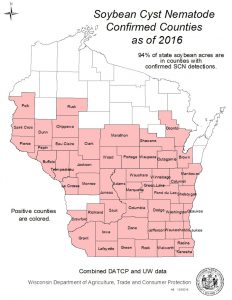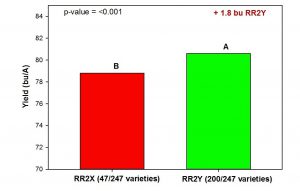Industrial Hemp in Wisconsin: The First Steps!
The University of Wisconsin Madison and UW Extension has been inundated with questions related to industrial hemp production since the passing of the 2017 Wisconsin Act 100. The below information was authored by Patrick Robinson, Associate Dean Department of Agriculture and Natural Resources, Cooperative Extension, University of Wisconsin Extension. Patrick recognizes William (Bill) Barker Associate Dean for Research, The College of Agricultural and Life Sciences, The University of Wisconsin – Madison as a significant contributor to this article. Patrick also recognizes DATCP and NIFA sources as some language was copied verbatim for legal purposes.
- Wisconsin growers will be able to grow and process industrial hemp under 2017 Wisconsin Act 100, a law recently passed by the Legislature and signed by the Governor. The law directs the Wisconsin Department of Agriculture, Trade and Consumer Protection to write an emergency administrative rule that will spell out the details of the program, including requirements for growers. This is a pilot program to study growth, cultivation and marketing of industrial hemp. Participants will be required to obtain a license from DATCP to grow hemp, and to pass a background check before receiving a license. DATCP will complete the emergency rule by March 2, 2018. This rule will remain in effect until July 2020, or until the permanent administrative rule is completed – whichever comes earlier. As of today, the rules and pilot program have not been developed. More can be found here: https://datcp.wi.gov/Pages/Programs_Services/IndustrialHemp.aspx.
- USDA NIFA is authorized to support industrial hemp researchwhere such activity complies with state law. Further, the researcher must either 1) be an institution of higher education or state department of agriculture, 2) or grow the industrial hemp under the auspices of a state agricultural pilot program. More can be found here: https://nifa.usda.gov/industrial-hemp.
- Section 7606 of the 2014 Farm Bill did not alter the approval process for new drug applications or any other authorities of the FDA, nor does it alter the requirements of the Controlled Substances Act that apply to the manufacture, distribution, and dispensing of drug products containing controlled substances. Whether hemp may be grown for food and pharmaceutical products remains a question for the FDA and/or the DEA.
- State agricultural pilot programs must provide for State registration and certification of sites used for growing or cultivating industrial hemp.
- Importing seeds into Wisconsin to begin the hemp program may require permission from the U.S. Drug Enforcement Agency, which could affect the time when production can begin.
Please be patient as this is a very new and dynamic area for both WI farmers and legal system. Please stay tuned as updates will be provided as they come to light.











